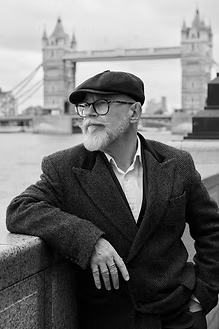Phil Lecomber - guest blog post

I've met Phil Lecomber, with whom I share an agent, a number of times over the past year or so. I enjoy his company, and asked him to talk about the background to his books. Here's his guest post:
'For inspiration for myGolden Age crime series, Piccadilly Noir, I turned to a collection ofbooks with a distinctly local provenance. After all, unlike the American milieuof Raymond Chandler, my protagonist, George Harley, inhabits a peculiarlyBritish world – one of grubby bedsits, all-night cafés, and Gold Flakecigarettes.
To establish the baseflavour, I began with some classic London aromatics. Dickens, of course – particularlyin his Sketches by Boz phase; Thomas Burke, whose problematic racialstereotypes might now obscure his otherwise fascinating depictions of the city;and that great biographer of London, Peter Ackroyd.
To bring out the interwarperiod flavour, I turned to Patrick Hamilton, whose novels – with theirpetrichor of disappointment and cast of troubled lodgers – provided a richstock for my world-building. I added further depth with some more obscure works,including Storm Jameson’s Here Comes a Candle, Philip Allingham’s Cheapjack,and Hippo Neville’s glorious Sneak-Thief on the Road.
Now to the meat of thestew: the works of the great Gerald Kersh – chiefly Night and the City,but also Fowler’s End, Prelude to a Certain Midnight, and TheAngel and the Cuckoo. Now sadly mostly forgotten, Kersh was once amongBritain’s highest-paid writers, living a life as colourful as his characters. Ablend of Night and the City and Graham Greene’s Brighton Rock wasexactly the flavour I was aiming for when I first began creating Harley’sworld.
For a little extra spice,I turned to a handful of gritty 1930s novels, including James Curtis’s TheGilt Kid; Robert Westerby’s Wide Boys Never Work; and GriersonDickson’s Soho Racket. And so, I believed, I had arrived at the perfectrecipe for a hard-boiled British noir series.'



